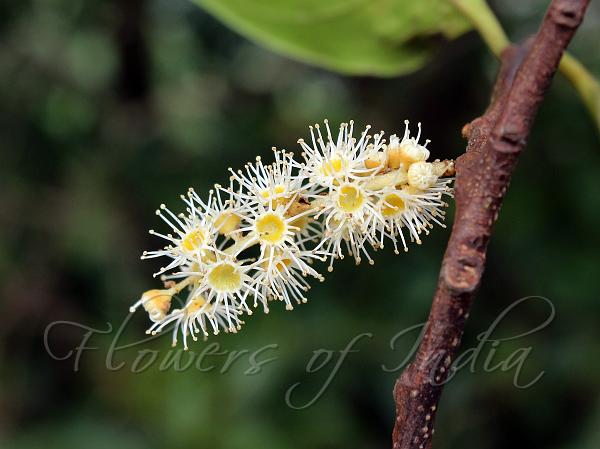|
| Ceylon Cherry |
|

|

| File size | 649903 |
| Original date | 9/25/15 10:35 AM |
| Resolution | 2048 x 1536 |
| Flash | Flash did not fire, auto |
| Focal length | 46.0mm |
| Exposure time | 1/125s |
| Aperture | 7.1 |
| Focus Distance | |
| Metering Mode | Multi-segment |
| Camera make | Canon |
| Camera model | Canon EOS 700D |
| Sensor type |
|
|
|
|
Photo: |
Botanical name: Prunus ceylanica Family: Rosaceae (Rose family)
Synonyms: Pygeum zeylanicum, Pygeum cochinchinense, Polydontia ceylanica
Synonyms: Pygeum zeylanicum, Pygeum cochinchinense, Polydontia ceylanica
Ceylon Cherry is an evergreen tree, up to 25 m
tall, bark 6-8 mm thick, brownish-black, rough, vertically fissured and
shallowly horizontally cracked forming thin tessellate flakes;
branchlets prominently warty. Leaves are simple, alternate; stipules
small, lateral, cauducous; leaf-stalk 10-22 mm, stout, grooved above,
hairless; blade 10-21 x 4.5-8.5 cm, ovate, ovate-lanceshaped,
oblong-lanceshaped, or elliptic-ovate, base pointed, round or oblique,
tip tapering or bluntly pointed, margin entire, hairless, leathery;
lateral nerves 5-9 pairs, pinnate, prominent, slender, intercostae
netveined, prominent, 2 pitted glands at base on either side of the
midrib often present. Flowers bisexual, 5-6 mm across, white, in in
leaf-axils racemes; bracts forming a cone in buds, deciduous; calyx
tube bell-shaped; lobes 5-6, ovate, pointed or blunt, densely hairy;
petals 5-6, oblong, woolly without; stamens 20-30; filaments slender,
incurved; anthers small; ovary stalkless, inferior, 1-celled, hairless,
ovules 2, drooping; style 1, subulate; stigma capitate. Fruit a drupe
2-2.5 x 3.5-3.7 cm, depressed spherical, obscurely 2-lobed, hairless;
seeds 2, spherical. Ceylon Cherry is found in Indo-malayasia - in India
it found throughout the Western Ghats and East Himalaya.
| Identification credit: Shrikant Ingalhalikar | Photographed in Mahabaleshwar, Maharashtra. |
• Is this flower misidentified? If yes,